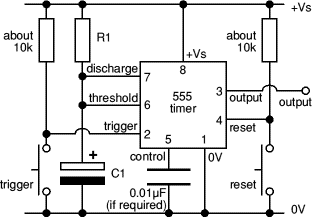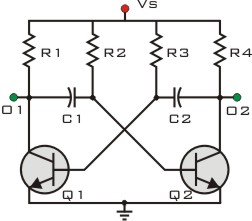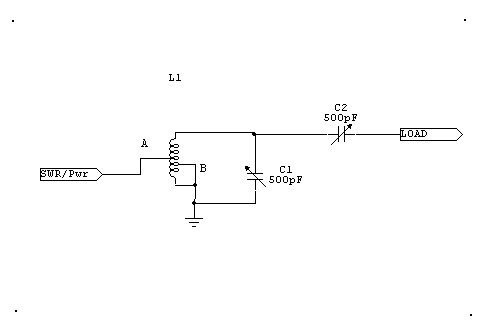
Automotive Circuits

This is a car alarm simulator that uses an LED as a simulation output. This simple circuit can indicate whether a car is running or not by detecting the voltage difference when the car is on or off. This occurs because when the car is operational, it generates a specific voltage level.
The car alarm simulator circuit primarily consists of a voltage detection mechanism that monitors the electrical state of the vehicle. The circuit is designed around a voltage comparator, which is typically implemented using an operational amplifier (op-amp). The op-amp compares the voltage level from the vehicle's battery with a predefined reference voltage.
When the vehicle is turned on, the voltage at the op-amp's input exceeds the reference voltage, resulting in a high output signal. This output can be connected to an LED, which will illuminate to indicate that the car is running. Conversely, when the car is turned off, the voltage drops below the reference level, causing the op-amp output to go low, which turns off the LED.
Additional components that may be included in the circuit are resistors to set the reference voltage and capacitors for noise filtering. A potentiometer can also be integrated to allow for adjustable sensitivity of the voltage detection. The circuit may be powered by the vehicle's battery, ensuring it operates reliably under the conditions present in an automotive environment.
This car alarm simulator circuit serves as a useful tool for testing and demonstrating the functionality of car alarm systems, providing a visual indication of the vehicle's operational status in a straightforward and effective manner.This is a car alarm simulator which using the LED as a simulation output. This simple circuit can tell you whether your car is running or not by detecting the voltage difference when the car is on and off. This occurs because when your car. 🔗 External reference
The car alarm simulator circuit primarily consists of a voltage detection mechanism that monitors the electrical state of the vehicle. The circuit is designed around a voltage comparator, which is typically implemented using an operational amplifier (op-amp). The op-amp compares the voltage level from the vehicle's battery with a predefined reference voltage.
When the vehicle is turned on, the voltage at the op-amp's input exceeds the reference voltage, resulting in a high output signal. This output can be connected to an LED, which will illuminate to indicate that the car is running. Conversely, when the car is turned off, the voltage drops below the reference level, causing the op-amp output to go low, which turns off the LED.
Additional components that may be included in the circuit are resistors to set the reference voltage and capacitors for noise filtering. A potentiometer can also be integrated to allow for adjustable sensitivity of the voltage detection. The circuit may be powered by the vehicle's battery, ensuring it operates reliably under the conditions present in an automotive environment.
This car alarm simulator circuit serves as a useful tool for testing and demonstrating the functionality of car alarm systems, providing a visual indication of the vehicle's operational status in a straightforward and effective manner.This is a car alarm simulator which using the LED as a simulation output. This simple circuit can tell you whether your car is running or not by detecting the voltage difference when the car is on and off. This occurs because when your car. 🔗 External reference
Warning: include(partials/cookie-banner.php): Failed to open stream: Permission denied in /var/www/html/nextgr/view-circuit.php on line 713
Warning: include(): Failed opening 'partials/cookie-banner.php' for inclusion (include_path='.:/usr/share/php') in /var/www/html/nextgr/view-circuit.php on line 713





